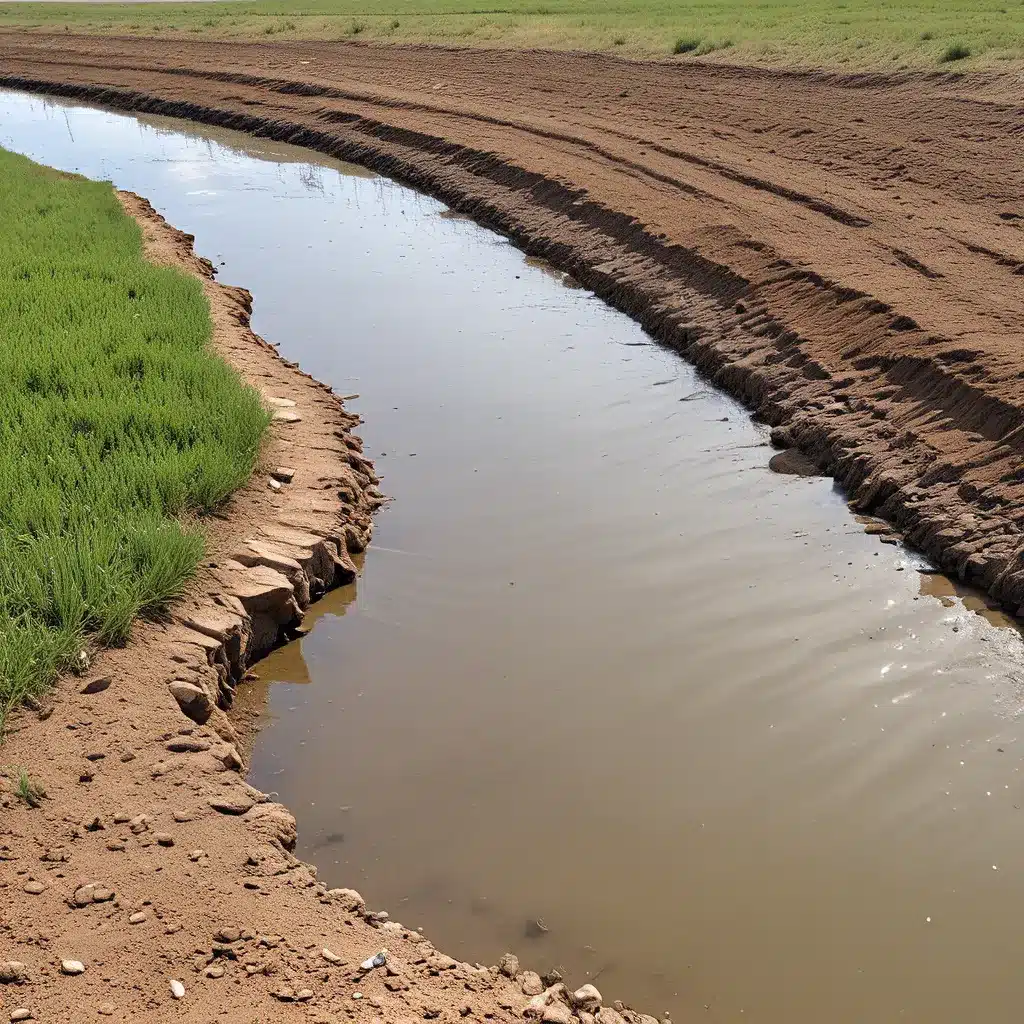
Ah, the unsung heroes of the water world – aquifers! These underground reservoirs, hidden from plain sight, are the backbone of our water security. But did you know that we can actually lend a hand and help recharge these silent sentinels? That’s right, my friends, it’s time to unleash the power of aquifer recharge and unlock a whole new world of groundwater replenishment strategies.
Diving into Aquifer Recharge
Let’s start with the basics. Aquifer recharge, also known as Managed Aquifer Recharge (MAR), is the process of intentionally adding water to an aquifer. This can be done through various methods, such as infiltration basins, injection wells, or even natural streams and wetlands. The goal? To replenish and maintain the groundwater levels, ensuring a steady supply of this precious resource.
But why is aquifer recharge so important, you ask? Well, my friend, with climate change and population growth putting a strain on our traditional water sources, we need to get creative. And that’s where MAR steps in, like a superhero in wet boots.
Studies have shown that by recharging aquifers, we can not only secure a reliable water supply but also mitigate land subsidence and protect ecosystems that depend on groundwater. It’s a win-win-win situation, and who doesn’t love a good triple-decker victory?
Strategies for Groundwater Replenishment
Now, let’s dive into the juicy details of aquifer recharge strategies. These innovative approaches are like a well-choreographed dance, each step carefully planned to ensure the long-term health of our groundwater resources.
Infiltration Basins: The Sponges of the Underworld
Imagine a giant sandbox, but instead of building castles, we’re capturing and storing water. That’s the basic idea behind infiltration basins. These shallow, natural or man-made depressions are designed to allow surface water to slowly seep into the ground, replenishing the aquifer below.
The beauty of infiltration basins lies in their simplicity and versatility. They can be used to capture stormwater runoff, treated wastewater, or even excess surface water from nearby rivers and streams. In places like Perth, Australia, MAR through infiltration basins has proven to be a game-changer, helping to enhance the city’s resilience to future water scarcity.
Injection Wells: The Aquifer’s Direct Line
While infiltration basins rely on the slow and steady approach, injection wells take a more direct route. These deep wells are designed to pump treated water directly into the aquifer, bypassing the surface and ensuring a more controlled and targeted recharge process.
Injection wells are particularly useful in areas where surface infiltration is not feasible, such as urban environments or regions with impermeable soil. In the Coachella Valley of California, for instance, injection wells have been used to combat the alarming decline of the local aquifer, providing a crucial lifeline for the region’s water supply.
Wetlands and Natural Recharge: The Gentle Giants
Not all aquifer recharge strategies involve human-made infrastructure. In fact, some of the most effective approaches leverage the power of nature itself. Wetlands, for example, can act as natural sponges, absorbing and slowly releasing water into the underlying aquifers.
Similarly, strategically placed streams and rivers can help replenish groundwater supplies through natural infiltration. In Perth, Australia, the city has harnessed this natural recharge process by managing and restoring urban wetlands and waterways, ensuring a steady flow of water into the aquifer.
The Future of Aquifer Recharge
As we navigate the uncharted waters of a changing climate and growing water demands, the importance of aquifer recharge becomes ever more apparent. And let me tell you, the future of groundwater replenishment is looking bright!
Technological Advancements: Diving into the Digital Realm
The world of water management is undergoing a digital revolution, and aquifer recharge is no exception. Cutting-edge technologies like real-time monitoring, predictive analytics, and smart metering are revolutionizing the way we manage and optimize our groundwater resources.
Imagine a future where we can precisely track the movement and storage of water within our aquifers, allowing us to tailor our recharge efforts for maximum efficiency. Or how about a system that can predict and respond to fluctuations in water demand, ensuring that our aquifers are always topped up and ready to go?
Collaborative Efforts: Stronger Together
The success of aquifer recharge doesn’t rest solely on the shoulders of water management professionals. It takes a village – or in this case, a whole community – to ensure the long-term sustainability of our groundwater resources.
From engaging with local stakeholders to fostering cross-border cooperation, collaborative efforts are key to unlocking the full potential of aquifer recharge. After all, we’re all in this together, and by working hand in hand, we can create a future where the well never runs dry.
Diving into the Unknown: Embracing the Aquifer’s Mysteries
As we continue to explore the depths of aquifer recharge, one thing is clear: there’s still so much to discover. The underground world of groundwater is a vast, complex, and often misunderstood domain, and we’re just beginning to scratch the surface.
But that’s the beauty of it, isn’t it? The unknown, the mysterious – it’s what keeps us curious, driven, and eager to uncover the secrets of the aquifer. Who knows what innovative solutions and game-changing breakthroughs await us as we dive deeper into the heart of this vital resource?
So, my friends, let’s embrace the aquifer’s mysteries and embark on a journey of groundwater replenishment. Together, we can unleash the incredible potential of aquifer recharge and secure a water-wise future for all. After all, when it comes to our most precious resource, every drop counts, and every strategy matters.


